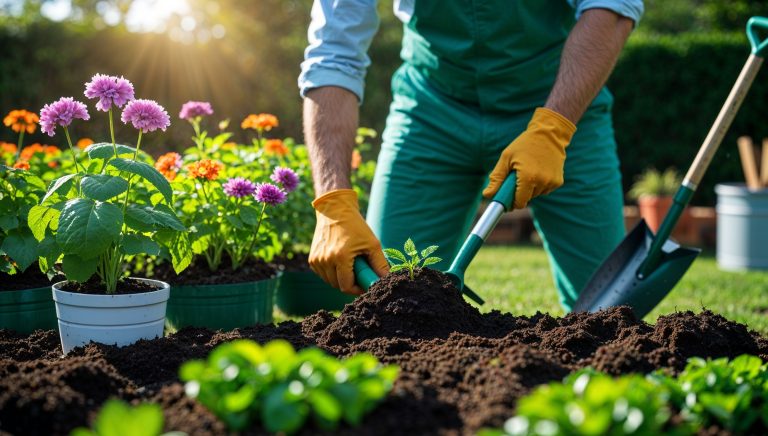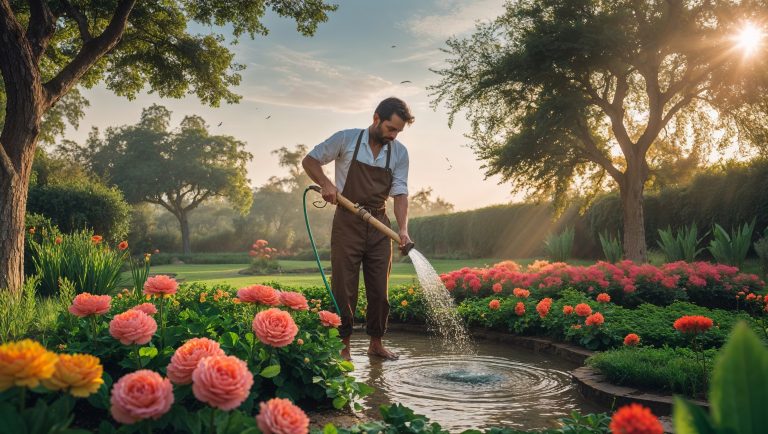

Watering your garden is one of the most important aspects of plant care. Whether you are growing flowers, vegetables, or herbs, providing the right amount of water at the right time ensures that your plants thrive. Overwatering or underwatering can lead to various plant problems, so understanding the proper techniques is essential. In this article, we’ll guide you through the best watering practices to keep your garden healthy and vibrant.
Every plant has different watering requirements, and understanding these needs is the first step in watering your garden effectively. Some plants prefer more frequent watering, while others can tolerate drought conditions. The key is to match the watering habits to each plant’s preferences.
Certain plants, like vegetables, flowers, and some shrubs, need a lot of water to thrive. These plants generally prefer consistently moist soil. For example, leafy greens such as lettuce, spinach, and kale require regular watering to keep their leaves crisp and vibrant. Similarly, flowers like hydrangeas and roses need ample moisture to bloom fully. Make sure to water these plants regularly and deeply to ensure they have enough moisture in their root zones.
On the other hand, drought-tolerant plants, such as succulents, cacti, and lavender, do not need frequent watering. These plants are adapted to survive with less water, and overwatering them can lead to root rot. For drought-resistant plants, water them only when the soil is completely dry. The goal is to encourage deep root growth, which helps the plant withstand dry periods.
The timing of watering plays a crucial role in the health of your plants. Watering at the right time ensures that the water is absorbed efficiently and helps prevent problems like evaporation or mold growth.
The best time to water your garden is early in the morning, ideally between 6 a.m. and 9 a.m. During this time, the temperature is cooler, and the sun is not yet at its peak. This allows the water to be absorbed by the roots before the heat of the day causes excessive evaporation. Morning watering also gives the foliage enough time to dry out during the day, which helps prevent fungal diseases like powdery mildew.
If you cannot water in the morning, the next best time is in the evening, after the sun has set. Evening watering also prevents water from evaporating too quickly, allowing the soil to retain moisture overnight. However, avoid watering too late in the evening, as damp foliage can attract pests and lead to fungal issues.
The way you water your garden matters as much as when you water it. Using the right technique ensures that your plants receive the water they need without wasting resources.
Shallow watering, where you water only the surface of the soil, does not encourage deep root growth. This can lead to weak plants that are dependent on frequent watering. On the other hand, deep watering, where water is applied slowly and deeply to reach the root zone, encourages strong, healthy roots. This method allows the roots to grow deeper into the soil, making the plant more drought-tolerant in the long term.
To water deeply, use a slow-release watering method, such as a drip irrigation system or a soaker hose, which provides a steady stream of water to the roots over time.
A watering can is ideal for small garden beds and potted plants, as it allows you to control the amount of water you’re applying and target specific plants. However, for larger garden areas, a hose with an adjustable nozzle or a sprinkler system is more efficient. These tools allow you to water larger areas without having to carry water around.
The frequency of watering depends on various factors, including the type of plants, weather conditions, and soil quality. A general rule of thumb is to water deeply once or twice a week, but you may need to adjust this based on your specific garden needs.
During hot summer months or periods of drought, your garden will need more water. Plants may dry out quickly, and the soil may lose moisture faster. In these conditions, water more frequently—perhaps every 3 to 4 days—and ensure that you’re watering deeply to reach the roots.
In cooler months, plants require less water as the soil retains moisture longer. You may need to water less often, possibly once a week or even less, depending on rainfall and the humidity levels in your area. During the rainy season, you may not need to water at all, as natural rainfall will provide the moisture your plants need.
Some gardens, especially those with sandy soil, tend to dry out quickly. To prevent your plants from drying out too fast, there are a few strategies you can use to improve water retention.
Adding a layer of mulch around your plants is one of the best ways to retain moisture. Mulch acts as a barrier, preventing the soil from drying out too quickly and reducing the amount of water that evaporates. Organic mulches, such as wood chips, straw, or compost, are ideal as they break down over time and improve soil quality.
In addition to mulch, you can improve soil water retention by adding water-retaining materials like peat moss or coconut coir. These organic amendments absorb and retain moisture, keeping the soil moist for longer periods of time. Mixing these materials into your soil will improve its overall water retention capacity.
Different types of gardens require different watering techniques. Here’s a breakdown of how to water various garden setups effectively.
Container gardens, whether on your patio or balcony, require more frequent watering than traditional in-ground gardens. Containers dry out faster because they don’t retain moisture as well as the soil in the ground. Water your containers regularly, but make sure to allow water to drain freely from the bottom to prevent waterlogged roots.
Raised beds provide excellent drainage and often allow for deeper soil, which benefits plant growth. However, they can dry out faster than in-ground gardens, especially during hot weather. Water raised beds thoroughly, ensuring the soil remains evenly moist but not soggy.
Sometimes, even with the best watering techniques, problems can arise. Here are a few common watering issues and how to fix them.
Overwatering can lead to root rot, yellowing leaves, and wilting plants. If your plants show signs of overwatering, reduce the amount of water you’re applying and ensure that the soil is draining properly. If the soil is consistently soggy, consider improving the drainage or switching to drought-tolerant plants.
Underwatering can cause plants to wilt, turn brown, or stop growing. If you notice these symptoms, increase the frequency of your watering, ensuring that the water reaches the root zone. You may also want to check the soil to ensure it’s not too compacted, as this can prevent water from reaching the roots.